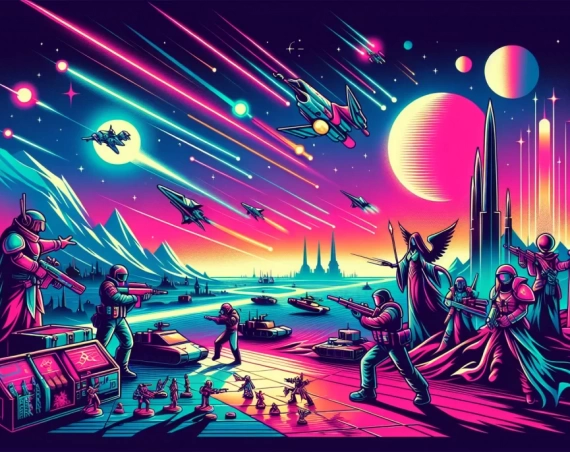
Silent Hill f Revival Sparks Debate: Is Combat So Bad It’s Good?
The release of Silent Hill f marks a significant departure from many of the long-standing conventions of the iconic horror series, shifting its setting from the misty American town to eerie Japanese paddy fields and emphasizing intense, Soulslike melee combat. This bold reinvention has garnered praise for its stunning visuals and its unflinching portrayal of teenage emotional turmoil but has also reignited a decades-old debate about the series’ combat design: can combat that is intentionally awkward or challenging actually enhance the horror experience?
The Legacy of Silent Hill’s Combat: Purposefully Awkward
Since the original Silent Hill released in 1999, the series has been known for combat that many players found frustratingly clumsy—unwieldy controls, poor aiming, and imprecise melee attacks. However, fans and creators have often defended these mechanics, arguing that the deliberate awkwardness was a thematic device designed to evoke a sense of vulnerability and panic. Unlike faster-paced games, where combat is often a source of empowerment, Silent Hill’s combat emphasized the helplessness of its ordinary protagonists facing supernatural horrors.
- Clunky combat mechanics caused players to struggle, reinforcing feelings of dread.
- Monsters in the game, such as the haunting Bubble Head Nurses and Slurpers, were challenging partly due to the player’s limited combat ability.
- This design philosophy underscored the narrative themes of fear and fragility.
This philosophy persisted even as later installments introduced more competent protagonists with enhanced combat abilities but often still retained an unsettling atmosphere. Notably, the Silent Hill 2 Remake by Bloober Team, released in 2024, modernized combat with smoother mechanics, borrowing from contemporary third-person shooters while preserving the protagonist’s vulnerability, a shift that received generally positive reviews.
Silent Hill f: A Soulslike Twist on Survival Horror Combat
Silent Hill f introduces a melee combat system heavily inspired by the Soulslike genre, known for its punishing difficulty and emphasis on timing and precision. This adaptation brings fresh tension to encounters by incorporating weapon durability, stamina management, and enemy attack pattern anticipation, all of which coalesce to create a nerve-wracking experience.
Key combat features include:
- Heavy, deliberate attacks: Player movements and strikes are slow and weighty, reflecting the protagonist Hinako’s inexperienced and fragile state.
- Imperfect dodge mechanics: While Hinako’s dodges are somewhat nimble, her inexperience is conveyed through awkward animations and clumsy turns.
- Weapon durability: Constantly declining resources add anxiety, forcing players to consider each engagement carefully.
- Risk and reward elements: Perfect dodges and counterattacks reward players but sometimes clash with immersion by empowering the protagonist unrealistically.
Despite these thoughtful design choices, many players and critics argue that the combat feels too punishing or inconsistent. Stamina management, in particular, is noted for being slow to recover, oftentimes leaving players vulnerable longer than desired. This, combined with tight level designs featuring narrow passages and claustrophobic interiors, limits the player’s ability to evade threats, contributing to frustration rather than tension.
The Delicate Balance Between Immersion and Gameplay
The Silent Hill series has historically relied on combat as more than just gameplay; it is a narrative and thematic tool. In Silent Hill f, this balance is challenging. While the Soulslike combat mechanics introduce a fresh, strategic layer to horror encounters, some elements—like perfect counters and supernatural Focus Mode abilities—risk breaking immersion by making the protagonist feel overly capable.
It raises fundamental questions for survival horror design:
- Should combat prioritize realistic vulnerability or player skill mastery?
- Can punishing mechanics contribute positively to horror atmosphere, or do they alienate players?
- How to balance polished gameplay with thematic cohesion?
Current trends in the horror genre show an increasing incorporation of action elements to meet market demands. Bloober Team’s recent successes demonstrate the impact of integrating polished shooter mechanics with horror narratives, as seen in titles like the Silent Hill 2 Remake and Cronos: The New Dawn. Similarly, Keiichi Toyama, creator of Silent Hill, in his 2024 game Slitterhead, elected to embrace action-heavy gameplay to widen audience appeal, underscoring industry pressures.
Conclusion: An Evolving Combat Philosophy for Horror Games
Silent Hill f‘s combat reignites a 26-year-old debate about whether combat in horror games should be intentionally imperfect to enhance fear or refined to satisfy modern gameplay expectations. This tension reflects broader shifts in game design, where evolving player preferences and technological possibilities challenge traditional formats.
While Silent Hill f boldly experiments with Soulslike combat, blending thematic vulnerability with punishing gameplay, the mixed reception suggests that the evolution of horror combat mechanics remains a complex, evolving challenge. Future installments of the franchise will likely continue to explore this balance, seeking to deliver immersive horror experiences compatible with contemporary player demands.
For now, Silent Hill f stands as a compelling, if imperfect, chapter in survival horror’s ongoing story—one that’s redefining what combat means in a genre rooted in vulnerability and fear.
Explore more on the evolution of survival horror combat and gaming trends in our related features and reviews.
References:


